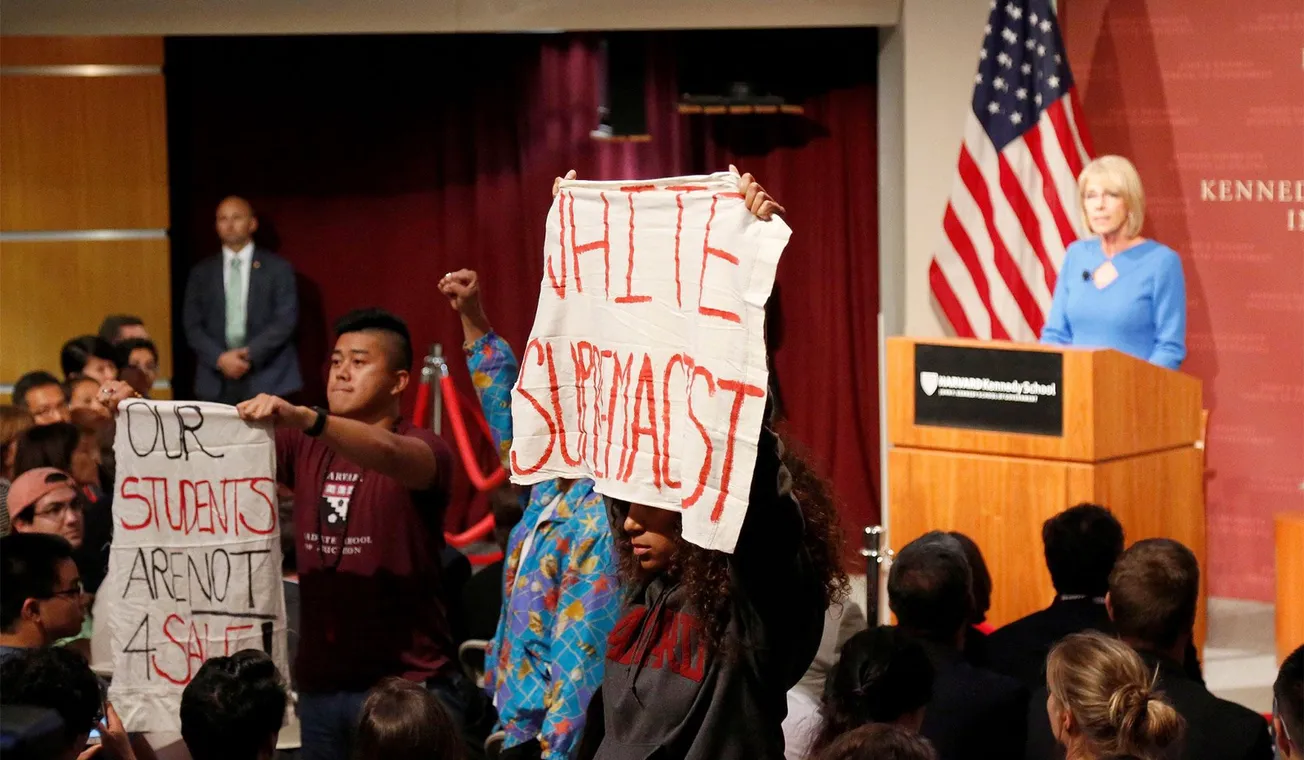Table of Contents
Family and friends warned me that Californian culture would throw me off balance. While the transition has been smoother than I anticipated, I did experience an unexpected political shock. I identified with the left back in Britain and expected to find sympathetic values at Stanford, the intellectual locus of a Democratic stronghold state. But it became clear a few weeks into freshman year that the British left-wing bears little resemblance to the divisive identity politics driving campus political discourse.
Socially liberal practices from gender-neutral bathrooms to safe spaces abound, yet traditionally left-wing ideas like a broad welfare state, corporate taxation, and affordable college education are all but absent from campus politics and activism.
Since 2017, when I started Stanford, liberals have indulged in disputes that have little relevance to the real world. They have operated as a censorship police, trying to ban Robert Spencer and Dinesh D’Souza from exercising the right to free speech, spent hours discussing the merits of “x” in the term “Latinx,” and called for the renaming of Serra Mall.
In my own experience, they have occasionally lacked empathy and critical thinking, qualities I had always associated with the left. “I didn’t know white people could shed tears,” one student remarked after reading the confessions of her white peers on the Facebook group, ‘Places I’ve Cried.’
When I reported on the rally protesting Charles Murray’s Cardinal Conversations talk, I asked protesters if they had read the source of their grievances, The Bell Curve. None had. Surely, Stanford students can do better than throw around accusations of white supremacy and eugenics without doing their research. The Stanford Daily’s managing editor didn’t allow me to publish the quotes on the grounds that it would undermine the protestors. The fact that an independent newspaper perpetuated an echo chamber worried me even more.
In humanities classes, campus liberals have forgotten how to argue. Emotions triumph over rational discourse. Students preface arguments with stock phrases like “as a minority” or “as a woman of color” and rebut disagreeable points by invoking their opponent’s “white male privilege,” a fallacy known as ad hominem. The greatest rhetoricians did not speak in terms of personal identities; they bolstered content with reason and challenged uncomfortable ideas head on.
In its finest moments, the American Left has championed universal liberalism: a philosophical position that emerged from the Enlightenment and espouses individuality, freedom, and equality opportunity. The Civil Rights Movement, second-wave feminism, and gay pride gained ground because they challenged discrimination by appealing to a universal liberal spirit and a shared humanity.
These liberal ideals were at the forefront of student outreach during the summer of 1965, when Stanford students interviewed Civil Rights workers in the South, and the anti-apartheid movement, when activists (including the future National Security Advisor Susan Rice and U.S. Ambassador to Russia Michael McFaul) demanded the University divest from South Africa’s inhumane regime.
In contrast, today’s campus liberals peddle an identity politics that stems from 1970s postmodernism. The relativist doctrine argues that all knowledge is constructed in the service of power (e.g. #DecolonizeOurEducation). It created new fields of scholarship like postcolonialism, intersectionality, and queer theory that reimagined America as a Hobbesian battlefield between the oppressors and the oppressed, and found its most ardent supporters in students. The consequences have been devastating.
On a daily basis, Stanford’s liberals inadvertently disempower the very students they claim to serve. Shielding students with safe spaces and trigger warnings patronizes them and creates a self-fulfilling prophecy. Tell someone they are a victim enough times and they will begin to think and behave as if they are. Psychologists call it “learned helplessness.” Never mind that those on the receiving end are bright, ambitious Stanford students.
Moreover, the myopic focus on identity diverts precious attention and resources on campus away from addressing serious socio-economic issues, which transcend divisions and capture the hearts and minds of Americans. It’s easier to hoist a banner declaring “Racism lives here too” or self-righteously debate cultural issues than address glaring socio-economic inequality. For example, why do 66% of Stanford students come from the top quintile of income despite our purported commitment to diversity? How will the working class fare in an automated future that Stanford is helping to build? Stanford students might decry white or male privilege, but the true origin of privilege in America is money, and all of the contacts, opportunities, and nepotism it pays for.
One notable exception to the trend of campus liberalism has been the rise of Stanford Coalition for Planning an Equitable 2035. The student group advocates for affordable housing for university employees in alliance with the labor union on campus. It is a testament to the group’s faithfulness to the left and engagement with campus workers that they have become “the most powerful activist group on campus,” as Stanford Politics rightly argued. At a liberal university, there should be more student groups aiding this admirable, but lone, effort.
Stanford’s liberals – with their intersectional grievances and disempowering rhetoric – are a mockery of the left. They wage a tribalistic war, demanding special recognition for ever-smaller minority groups, and distort the left’s original message of democratic solidarity. If they want to champion minorities, address issues of national consequences, and help win elections, they need to overhaul their strategies immediately.
For some inspiration, they might follow the lead of the 2020 Democratic candidates, whose energizing economic platforms already suggest a return to the party’s left-wing roots. The most inspiring contenders are emphasizing social welfare policies like universal medical care and guaranteed college education in a determined effort to avoid Hillary Clinton’s mistake and win back the left. When Democrats advance identity politics over a clear and compelling economic policy, they allow right-wing populists to step to the fore. It’s about time Stanford’s liberals learnt this lesson.









